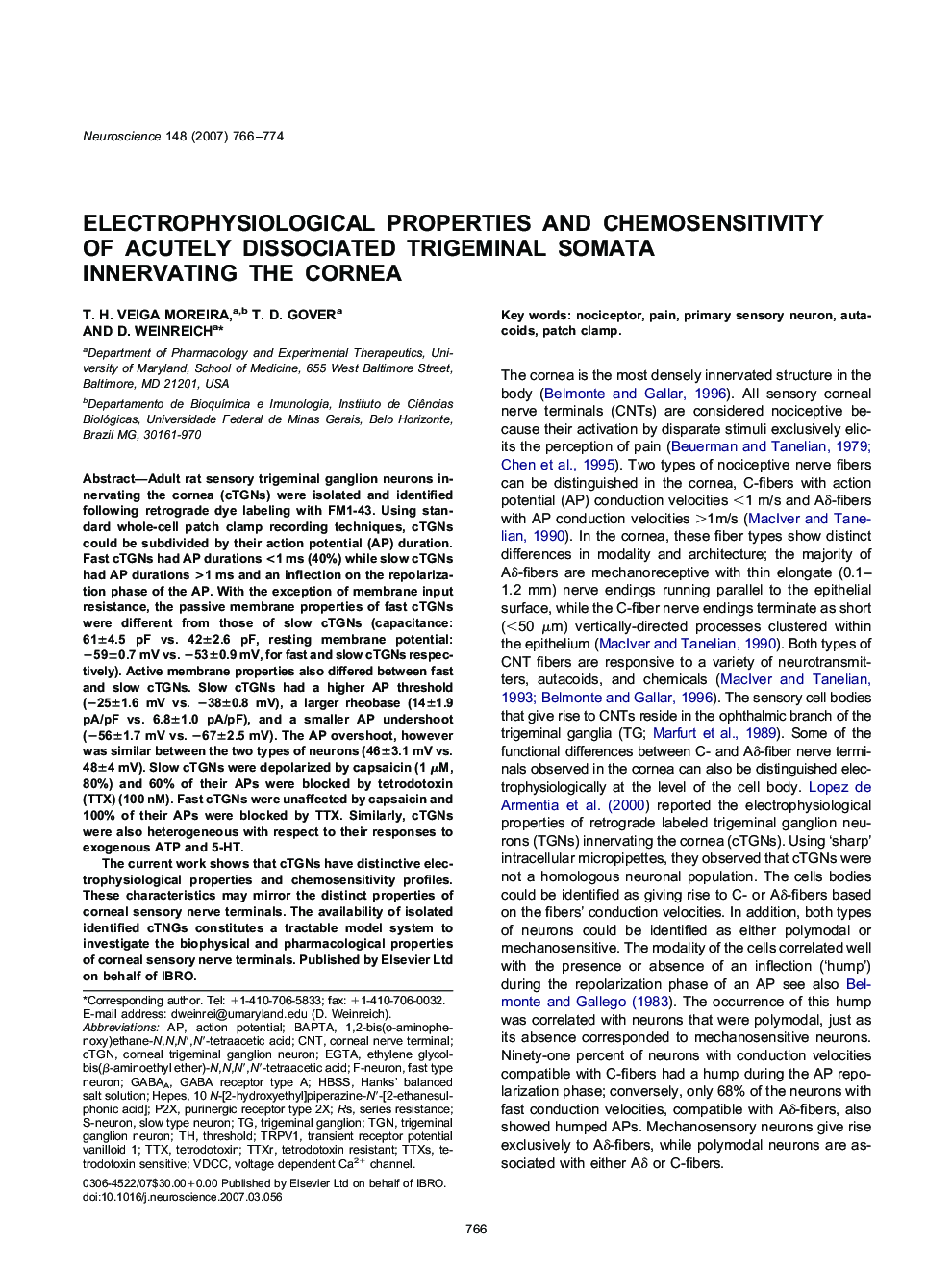| Article ID | Journal | Published Year | Pages | File Type |
|---|---|---|---|---|
| 4342583 | Neuroscience | 2007 | 9 Pages |
Adult rat sensory trigeminal ganglion neurons innervating the cornea (cTGNs) were isolated and identified following retrograde dye labeling with FM1-43. Using standard whole-cell patch clamp recording techniques, cTGNs could be subdivided by their action potential (AP) duration. Fast cTGNs had AP durations <1 ms (40%) while slow cTGNs had AP durations >1 ms and an inflection on the repolarization phase of the AP. With the exception of membrane input resistance, the passive membrane properties of fast cTGNs were different from those of slow cTGNs (capacitance: 61±4.5 pF vs. 42±2.6 pF, resting membrane potential: −59±0.7 mV vs. −53±0.9 mV, for fast and slow cTGNs respectively). Active membrane properties also differed between fast and slow cTGNs. Slow cTGNs had a higher AP threshold (−25±1.6 mV vs. −38±0.8 mV), a larger rheobase (14±1.9 pA/pF vs. 6.8±1.0 pA/pF), and a smaller AP undershoot (−56±1.7 mV vs. −67±2.5 mV). The AP overshoot, however was similar between the two types of neurons (46±3.1 mV vs. 48±4 mV). Slow cTGNs were depolarized by capsaicin (1 μM, 80%) and 60% of their APs were blocked by tetrodotoxin (TTX) (100 nM). Fast cTGNs were unaffected by capsaicin and 100% of their APs were blocked by TTX. Similarly, cTGNs were also heterogeneous with respect to their responses to exogenous ATP and 5-HT.The current work shows that cTGNs have distinctive electrophysiological properties and chemosensitivity profiles. These characteristics may mirror the distinct properties of corneal sensory nerve terminals. The availability of isolated identified cTNGs constitutes a tractable model system to investigate the biophysical and pharmacological properties of corneal sensory nerve terminals.
